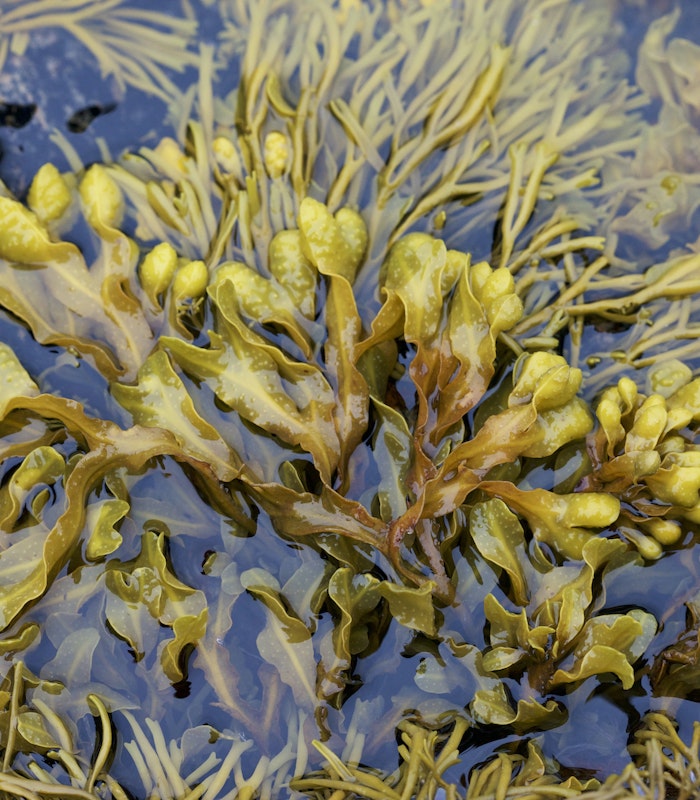Sodium Alginates deliver thickening or gelling functionality based on the polymer type, usage level and presence of calcium ions. When using Sodium Alginate it can be challenging to fully hydrate this cold water- soluble hydrocolloid while minimizing exposure of the polymers to soluble calcium ions. The linkages or bridges between the manuronic and guluronic acid groups and calcium ions can begin with polymer hydration and result in an uneven or pulpy gel structure that can be referred to as "pre-gelling." Often buffering salts and chelators are used to manage pH and exposure to calcium ions by selction of added calcium salts based on solubility. Temperature can be used also to aid managing the exposure of hydrated Soldium Alginate and soluble calcium and control the gel formation. It is important to remember that once gels are formed with Sodium Alginate they are not reversible. This characteristic makes Alginate a solution in bake-stable pastry fillings. Knowledge of Sodium Alginate has increased following the popularity of molecular gastronomy where it is used to make caviar-like gel beads with colorful and exotic ingredients that do not themselves form gels.

Alginate
Common Names
- Sodium Alginate
Functionality
- Thickener
- Gelling Agent
Quality
- Viscosity
- Gel Strength
Applications for Alginate
Botanical Sources
Brown seaweeds are the botanical source of Sodium Alginate. The alginic acid is is a cell wall component and commonly isolated from Laminaria, Ascophyllum and Lessonia species. The algal mass is treated at pH 4, then the alginate is extracted with a solution of sodium carbonate at elevated pH and temperature. The alginate is recovered as insoluble calcium alginate which is treated with acid and sodium carbonate to deliver soluble Sodium Alginate. Filtration, concentration, drying and milling follow to produce the Sodium Alginate powders used extensively in food (gels, films, coatings), medical (pharmaceutical delivery systems, wound treatments, microencapsulation) and industrial applications (textile printing, ceramics, water treatment).

Polymer Chemistry
Alginates are the salts of alginic acid which is a linear unbranched polymer comprised of the combination of manuronic acid (M) and guluronic acid (G). Groups of M and G acid groups are dispersed along the polymer chain. The differences in bonding pattern within the M and G groupings results in different secondary polymer structure. The overall molecular weight, ratio of M:G components and the distribution of the M/G units influence the physical properties of the polymers, solubility, gel strength or thickening functionality. The M:G ratio varies between algal species, tissue maturity and harvesting conditions. The hydrated polymers are highly reactive with calcium ions to form cross-linkages between M-M or G-G units. These gels vary in strength based on distribution of the M and G repeating units within the polymer chain. Gels are not reversible.
